Insect and Mite Pests of Hemp
THIS WEBSITE IS A WORK IN PROGRESS. WE ARE ADDING CONTENT DAILY.
Mite and insect pests are going to be an issue in the production of Industrial Hemp in Florida fields, shade structures and greenhouses. Crops will turn over rapidly but so will many of the pests we have already detected as part of the University of Florida Pilot Program.
This site is not meant to replace what is the best resource for insects and mites that attack hemp (Colorado State Hemp Insect Website). This site is aimed at presenting information about Florida arthropod pests and their management.
Making recommendations on how to manage the pests we discuss in this website will be forthcoming. Because this is a new crop and we have very little Florida data on how to manage them it will take a while to determine what is both effective and safe for the crop. We will use the FDACS Florida Pesticide List to determine which products we will evaluate. As you will see, there are 4 pages of products approved for use on hemp in Florida. This list will change over time, but it is all we have at this point. We can't evaluate all the materials listed and thus we will limit what we evaluate to products we have funding to evaluate or products that meet other criteria set my each of us who are planning to conduct such research.
- Florida Pesticide List: https://www.fdacs.gov/content/download/91490/file/fdacs-guide-list-pesticide-products-for-use-on-hemp-2020.pdf
- Pesticide Brochure: https://www.fdacs.gov/content/download/91491/file/hemp-pesticides-brochure.pdf
- UF/IFAS Industrial Hemp Pilot Project: Hemp pests in Florida: MREC Hemp Pests Fact Sheet
-
PHANTASMA SCALE
PHANTASMA SCALE
This is a late instar nymph. Note the coloration on the top of the abdomen.
Ahmed, M.Z., & Miller, D.R. 2018. First U.S. Continental Record of Fiorinia phantasma Cockerell & Robinson (Hemiptera: Diaspididae), Phantasma Scale, Potential Pest of Palms and Ornamentals Plants. Pest Alert (Animal and Plant Health Inspection Service, United States Department of Agriculture) 01880 https://www.fdacs.gov/content/download/79840/file/pest_alert_-_fiorinia_phantasma.pdf
Ahmed, M.Z. 2018. Field Detection and Potential Host Plants of Fiorinia phantasma Cockerell & Robinson (Diaspididae: Hemiptera), Phantasma Scale, Potential Pest of Palms and Ornamental Plants in Florida. Circular (Florida Department of Agriculture and Consumer Services Division of Plant Industry) FDACS-P-01917 (439) https://www.fdacs.gov/content/download/82790/file/CIRCULAR%20-%20Phantasma%20Scale.pdf
Ahmed, M.Z., Miller, D.R., Rohrig, E.A., Hodges, G.S., Roda, A.L., McKenzie, C.L., & Osborne, L.S. 2021a. Field Report and Survey of Fiorinia phantasma (Hemiptera: Diaspididae), Potential Pest of Palms, and Ornamental Plants in the United States. Journal of Integrated Pest Management 12(1): 33; 1–10 https://academic.oup.com/jipm/article/12/1/33/6366163
Ahmed, M.Z., Moore, M.R., Rohrig, E.A., McKenzie, C.L., Liu, D., Feng, J., Normark, B.B., & Miller, D.R. 2021b. Taxonomic and identification review of adventive Fiorinia Targioni Tozzetti (Hemiptera, Coccomorpha, Diaspididae) of the United States. ZooKeys 1065: 141–203 https://zookeys.pensoft.net/article/69171
-
LYGUS BUGS
Lygus Bugs
Insects of the genus Lygus may also cause damage to hemp plants. Like stink bugs, Lygus bugs are in the order Hemiptera, but they belong to a different family: Miridae. Damage to hemp plants by Lygus bugs is minimal, but they can reduce the quality and production of hemp seeds. They feed using their piercing-sucking mouthparts and tend to target younger plant tissues (including seeds). This feeding may result in seed deformity.
Several species of Lygus bugs have been reported on hemp. Lygus lineolaris (Palisot de Beauvois), also known as the tarnished plant bug, is the most widely distributed Lygus species in the United States. Eggs of the tarnished plant bug are small but elongate. They are often laid singly but occasionally occur in groups. Tarnished plant bug nymphs undergo five instars and are yellow-green in color. As they develop, yellow, green, or black spots begin to appear on their bodies. Nymphs in the fourth and fifth instars have four black spots on the thorax and one black spot on the abdomen. Adult tarnished stink bugs come in various colors, including yellow with black markings and black with yellow markings. They have long legs and antennae and have yellow pubescence on their reddish-brown hemelytra (anterior wings).
There are several species of parasitoids that target both the eggs and nymphs of the tarnished plant bug. Anaphis iole (Girault) is a tiny wasp that parasitizes the eggs of the tarnished plant bug. Several species of Hymenoptera are known to parasitize nymphs of the tarnished plant bug. These include Eristenus pseudopallipes (Loan), Peristenus pallipes (Curtis), Peristenus digoneutis (Loan), and Leiophron uniformis (Gahan).
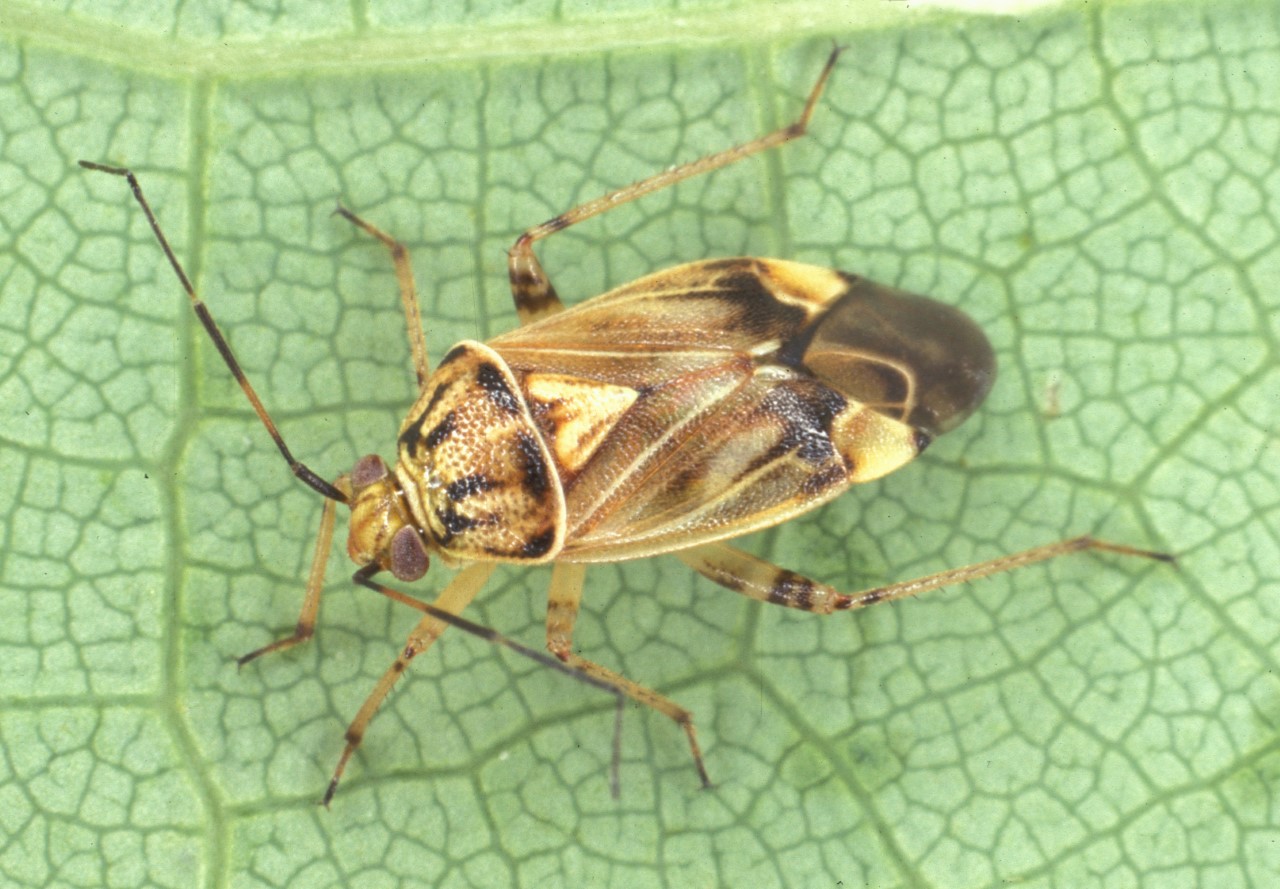
Tarnished Plant Bug. Photo by James Castner (UF/IFAS)
For more information, see UF/IFAS Featured Creatures: http://entnemdept.ufl.edu/creatures/trees/tarnished_plant_bug.htm
Selected References
-
THRIPS
Echinothrips americanus
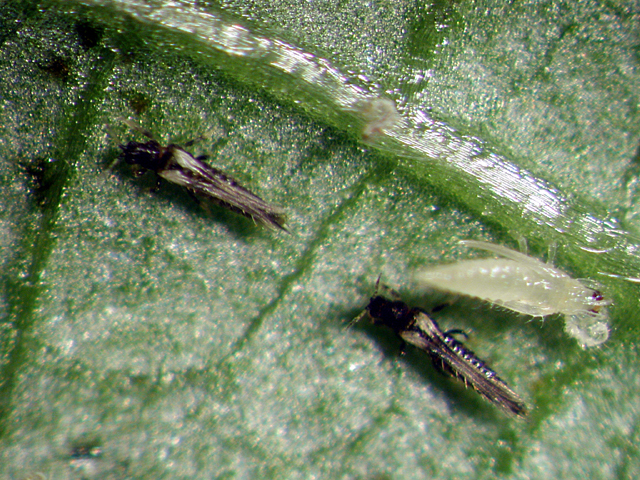
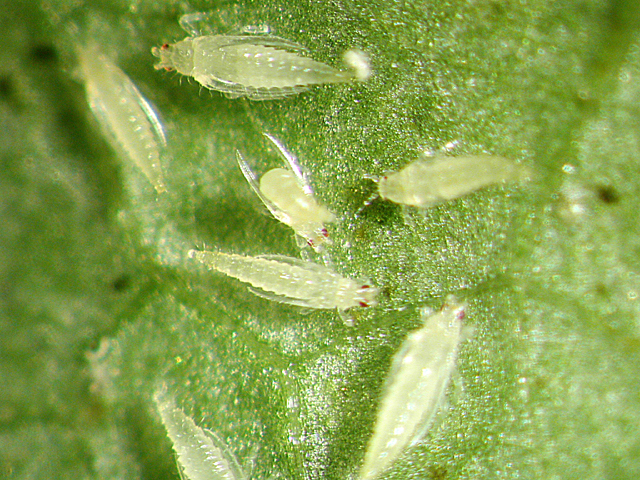
Franklinothrips vespiformis Crawford is a generalist predator but it appears to be very effective at managing this particular thrips.
For more information see: Franklinothrips vespiformis Crawford

Franklinothrips vespiformis Crawford is a generalist predator but it appears to be very effective at managing this particular thrips.
For more information see: Franklinothrips vespiformis Crawford
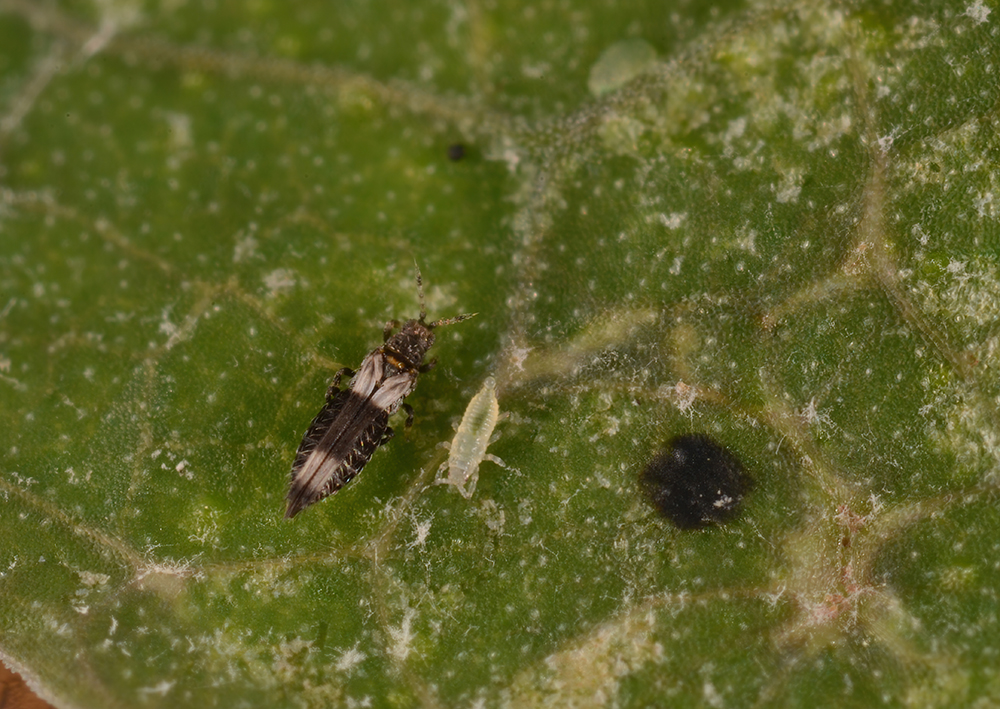
Caliothrips phaseoli on sweet potato.
Photo by Lyle J. Buss, Entomology & Nematology Dept., University of Florida
-
WHITEFLIES
Bemisia
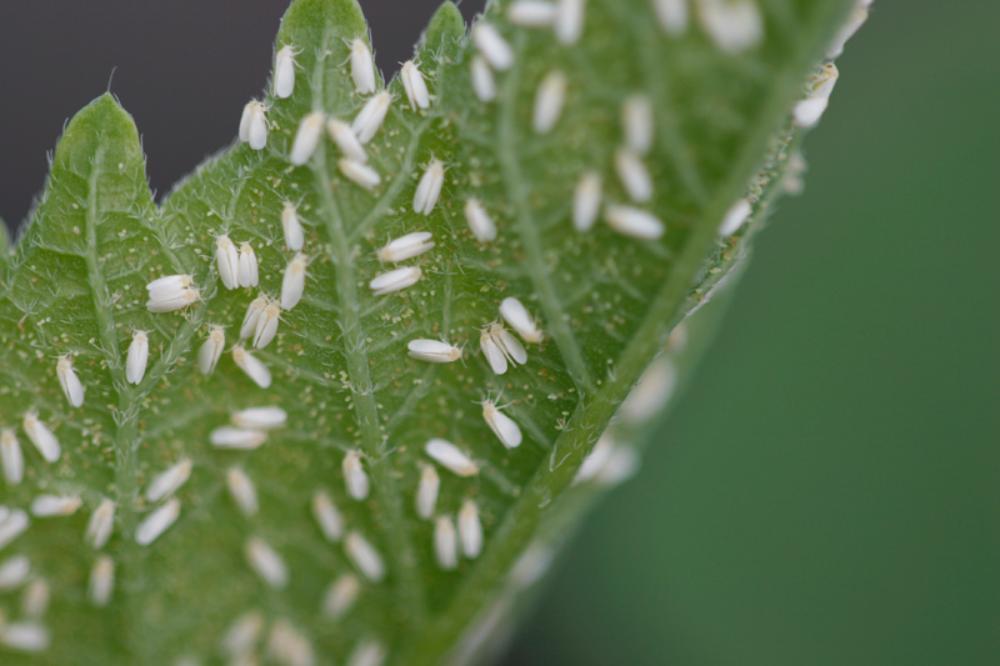
This photo shows the density of adults that can occur in the field. The plant is hibiscus and the adults are the MED or Q-biotype of Bemisia tabaci.
Adult Bemisia
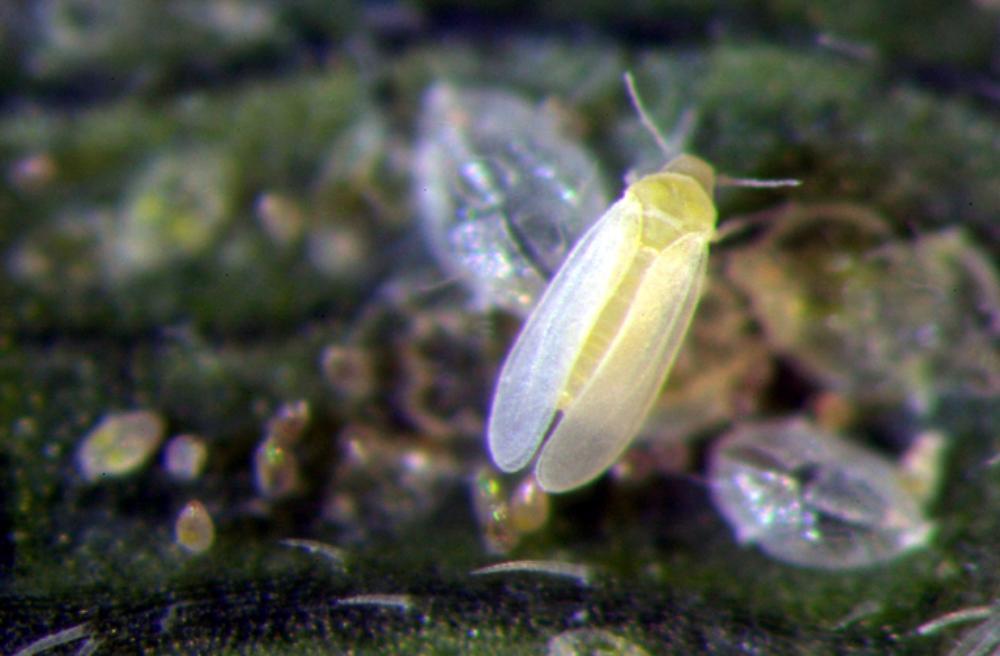
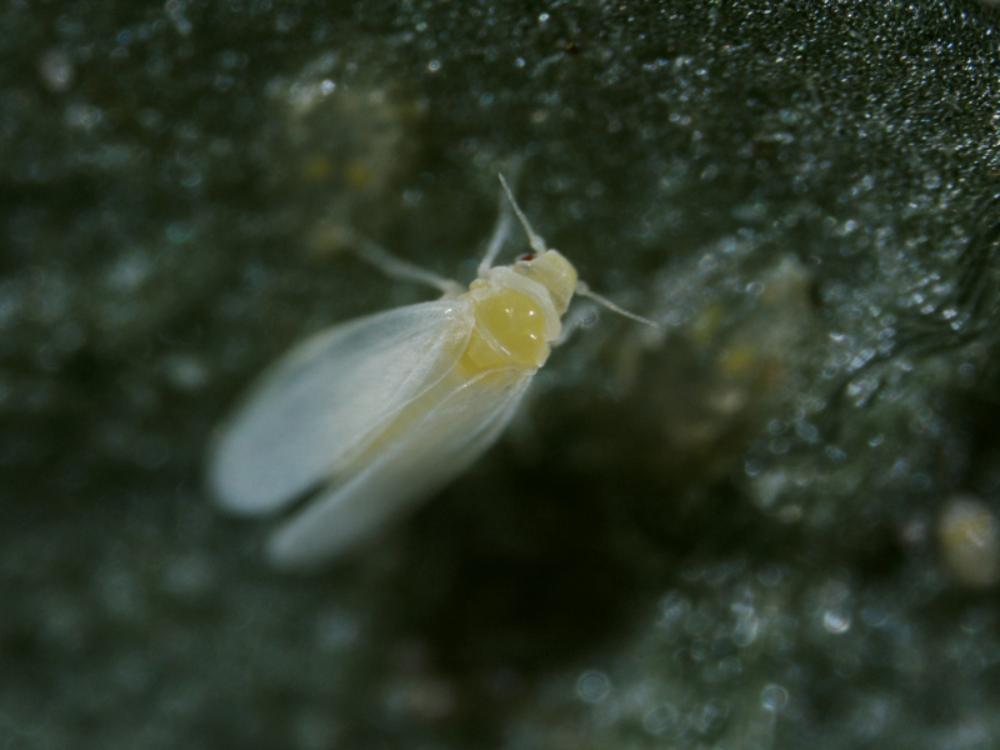
This is a photo of a whitefly just before in emerges from the last immature stage as an adult.
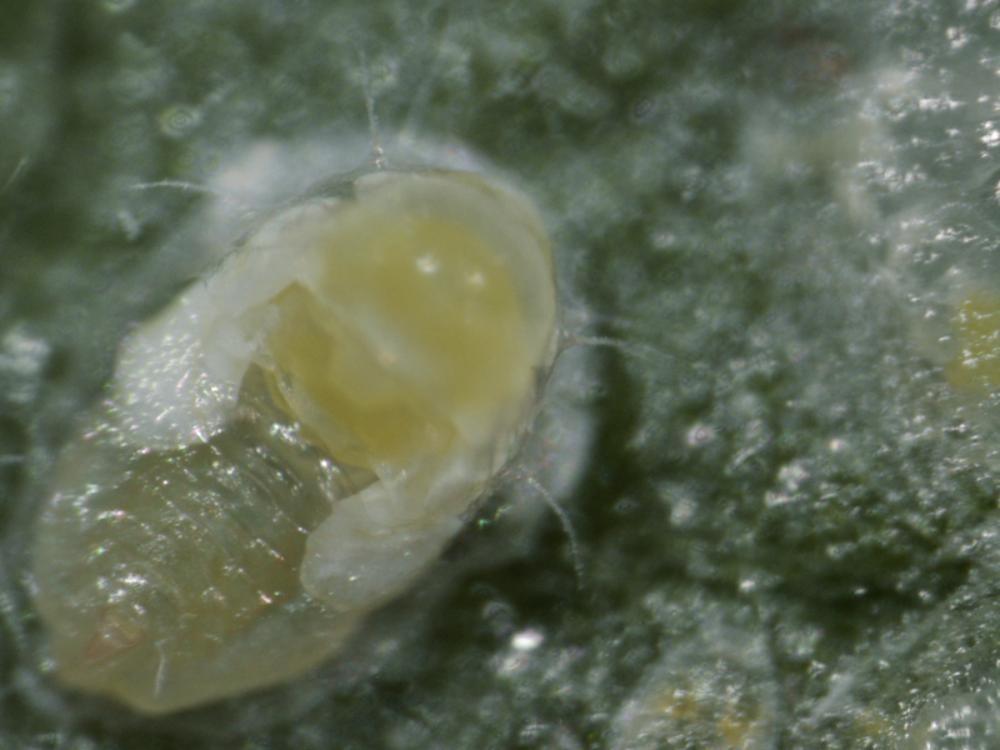
-
STINK BUGS
Stink Bugs
Stink bugs belong to the family Pentatomidae in the order of Hemiptera: the true bugs. Stink bugs may act as pests of hemp plants. Stink bugs have piercing-sucking mouthparts which they use to pierce plant tissue. As the stink bugs feed on the host plant, they may inject salivary fluids that are toxic to the plant.
Stink bug eggs are usually found on the underside of the leaves of the host plant. Hemiptera are hemimetabolous, therefore they undergo incomplete metamorphosis. Hemipteran life cycles have three phases; these are the eggs, multiple instars of nymphs, and the adults.
There are many predators and parasitoids of stink bugs including insects in the orders Diptera, Hymenoptera, Orthoptera, Coleoptera, and Dermaptera. Arachnids are occasional predators of stink bugs as well. Two types of damage may occur to stink bug eggs: chewing and piercing. Predators may consume the eggs, while parasitoids may pierce the eggs and oviposit into the eggs of the stink bugs. Parasitoids will then develop inside the stink bug egg. Biological control of stink bugs on hemp is preferable to traditional control methods because of the limited number of pesticides that are currently legal for use on hemp.
Nezara viridula (Southern Green Stink Bug)
The southern green stink bug Nezara viridula (Linnaeus) is a polyphagous pest of many food crops in the southeastern United States. While its distribution is primarily within this region, N. viridula has established as far west as California and has even spread to the islands of Hawaii. The southern green stink bug is believed to have originated in Ethiopia. It feeds on hemp seeds, leaves, and flowers.
Egg masses of the southern green stink bug can contain as many as 130 eggs. The eggs are white to light yellow to pink and have a unique barrel shape with flat tops and lids surrounded by finger-like projections called chorial processes. The nymphs undergo five instars before molting into adults. The first instars are light yellow in color with red eyes and transparent legs and antennae. The second instar is black with a red abdomen and yellow spots on each side of the thorax. The green color of the stink bug comes during the third and fourth instars, and during the fifth instar, wing pads emerge. The abdomen of the fifth instar has a characteristic yellow-green color with red spots on the median line.

Photo by Jennifer Carr (UF/IFAS)
Adult southern green stink bugs can be identified by the small black dots that line the sides of their abdomens. To distinguish N. viridula from the green stink bug Chinavia halaris (Say), the observer should locate the stink gland pore on the sternum between the second and third legs. This pore will be short and wide in the southern green stink bug but long and curved in the green stink bug.
Biological control of N. viridula is typically facilitated by insects in the orders Diptera and Hymenoptera. In the state of Florida, the tachinid fly Trichopoda pennipes parasitizes adult and nymph southern green stink bugs. The wasp Trissolcus basalis may parasitize the eggs of the southern green stink bug, thereby suppressing populations.
For more information, see UF/IFAS Featured Creatures: http://entnemdept.ufl.edu/creatures/veg/bean/southern_green_stink_bug.htm
Proxys punctulatus (Black Stink Bug)
Black stink bugs (Proxys punctulatus) (Palisot) are facultative feeders on plants and other insects, which means they are capable of feeding on a variety of plants and insects rather than specific varieties. They are distributed throughout Central America, South America, the Caribbean Islands, and the United States. In the United States, they are found on the eastern coast from as far north as North Carolina and as far south as Florida. They are also distributed throughout the mid-western states of Illinois and Oklahoma and in Texas.
The eggs are often laid in pairs or singly, and this is an important distinguishing characteristic of the species. The eggs are white and slightly oval-shaped. The nymphs go through five instars, and the different life stages can be distinguished by a change in color from light brown to dark black. The length of the antennal segments and shape of the meso and metatona also vary by instar. Adults are black and have black and cream-colored legs. The humeral angels of the adult black stink bug are pointed, and laterally directed humeral spines are present. Adults have a yellow spot at the top of the scutellum. The complete life cycle of the black stink bug is about 54 days.
Much like other stink bugs, the black stink bugs feed on plants using their piercing-sucking mouthparts. There have been unpublished reports of black stink bugs found on hemp in the state of Florida. The status of the black stink bug as a pest of hemp is still pending, and further research is necessary to determine how this species impacts hemp crops. Much of the black stink bug’s biology is still unknown, as are biological control measures against the black stink bug.
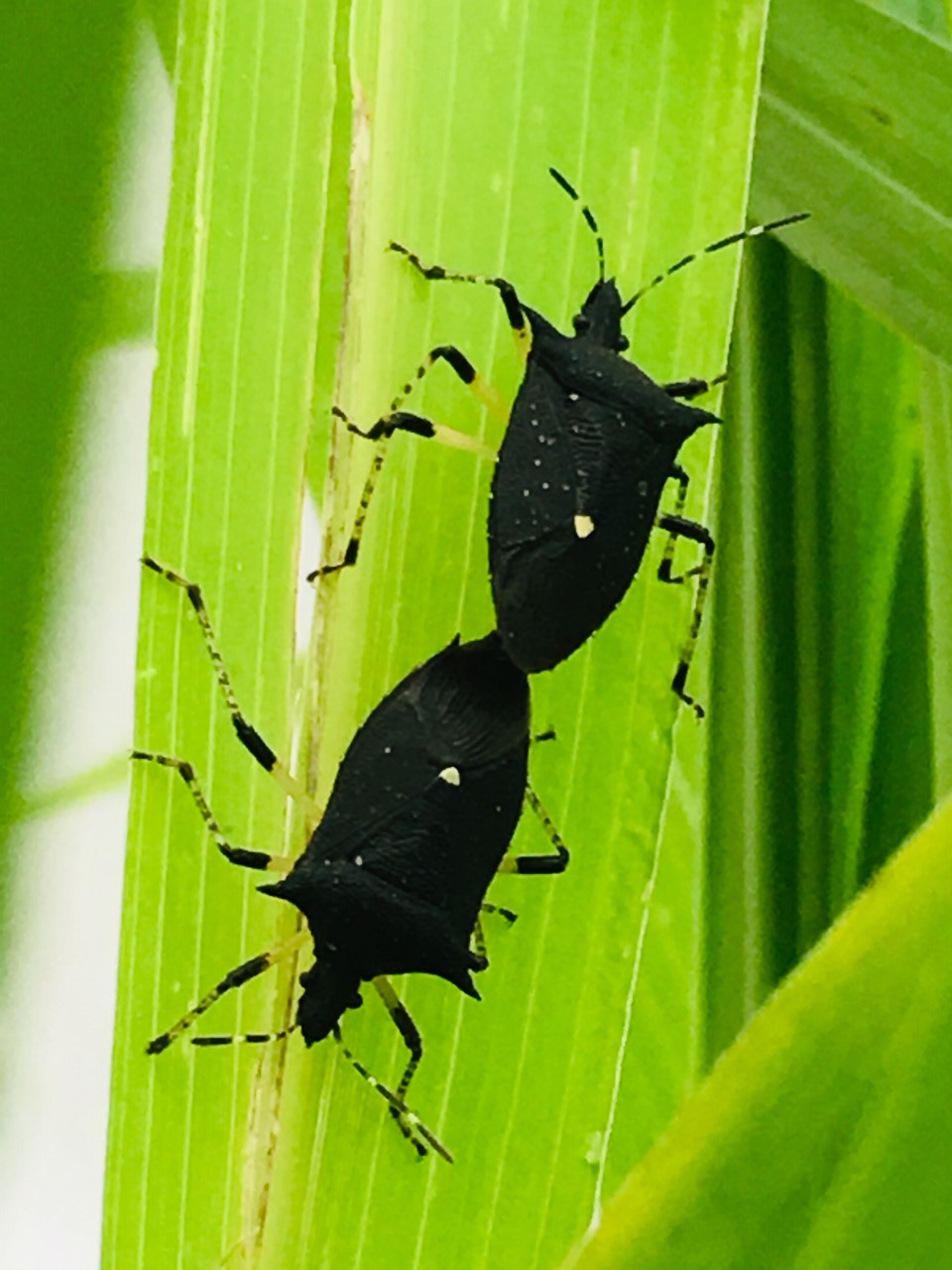
Photo by Keir Hamilton (UF/IFAS)
For more information, see UF/IFAS Featured Creatures: http://entnemdept.ufl.edu/creatures/misc/bugs/black_stink_bug.htm
Euschistus species
In North America, there are at least 20 species of stink bugs in the genus Euschistus. These stink bugs may be found on hemp, and the brown stink bug, Euschistus servus (Say), has been confirmed on hemp. All stink bugs in the genus Euschistus are predominantly brown and drab in color, but specific variations in their markings and morphology set them apart as different species. All adults of the genus Euschistus have microscopic notches on the anterolateral pronotal margins, and the humeral angles of the pronotum are acute to rounded.
E. servus (Say), the brown stink bug, is considered a very serious pest of a variety of crops in the southern United States. Its distribution in North America extends as far north as southern Canada. There are two subspecies that occur in North America: E. s. servus (Say) and E. s. eushistoides (Voltenhoven). E. s. servus has a distribution throughout the southern United States from Florida to California, and E. s. euschistoides is distributed throughout Canada and the northern United States.
The eggs of the brown stink bug are translucent and yellow, but turn light pink prior to hatching. Nymphs undergo five instars and change from brown in color to light green. Adults are a drab, gray-brown color with darkly colored markings on their backs. The genae, or cheeks, are large and pointed, and they extend past the clypeus.
Brown stink bugs are associated with the flowers and seeds of the hemp plant, and they feed using their piercing-sucking mouthparts. Parasitoid flies in the order Diptera may oviposit into the eggs of the brown stink bug. Two of these parasitoid species include Gymnosoma fuliginosa (Robineau-Desvoidy) and Cylindromyia binotata (Bigot). The wasp species Telenomus podisi (Ashmead) also parasitizes eggs of the brown stink bug.
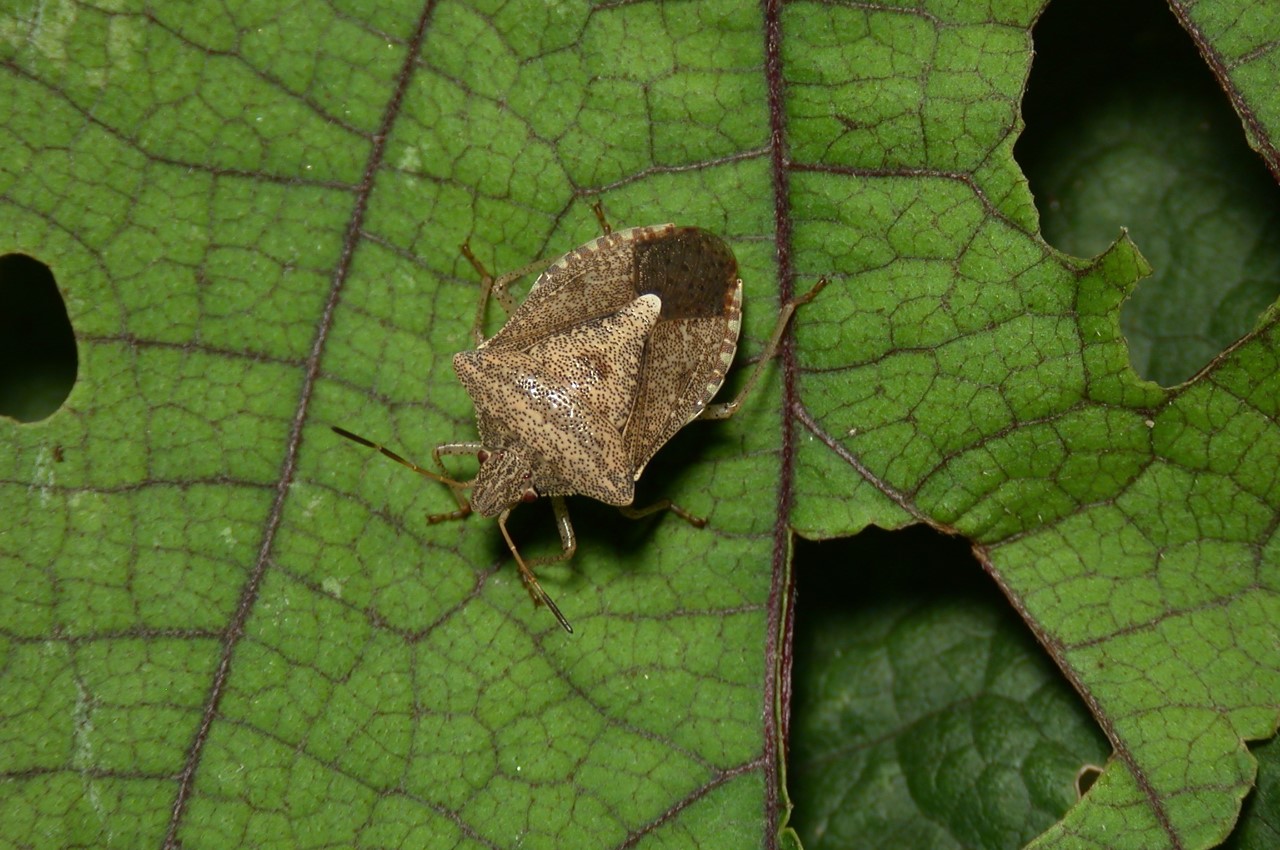
Photo by Lyle Buss (UF/IFAS)
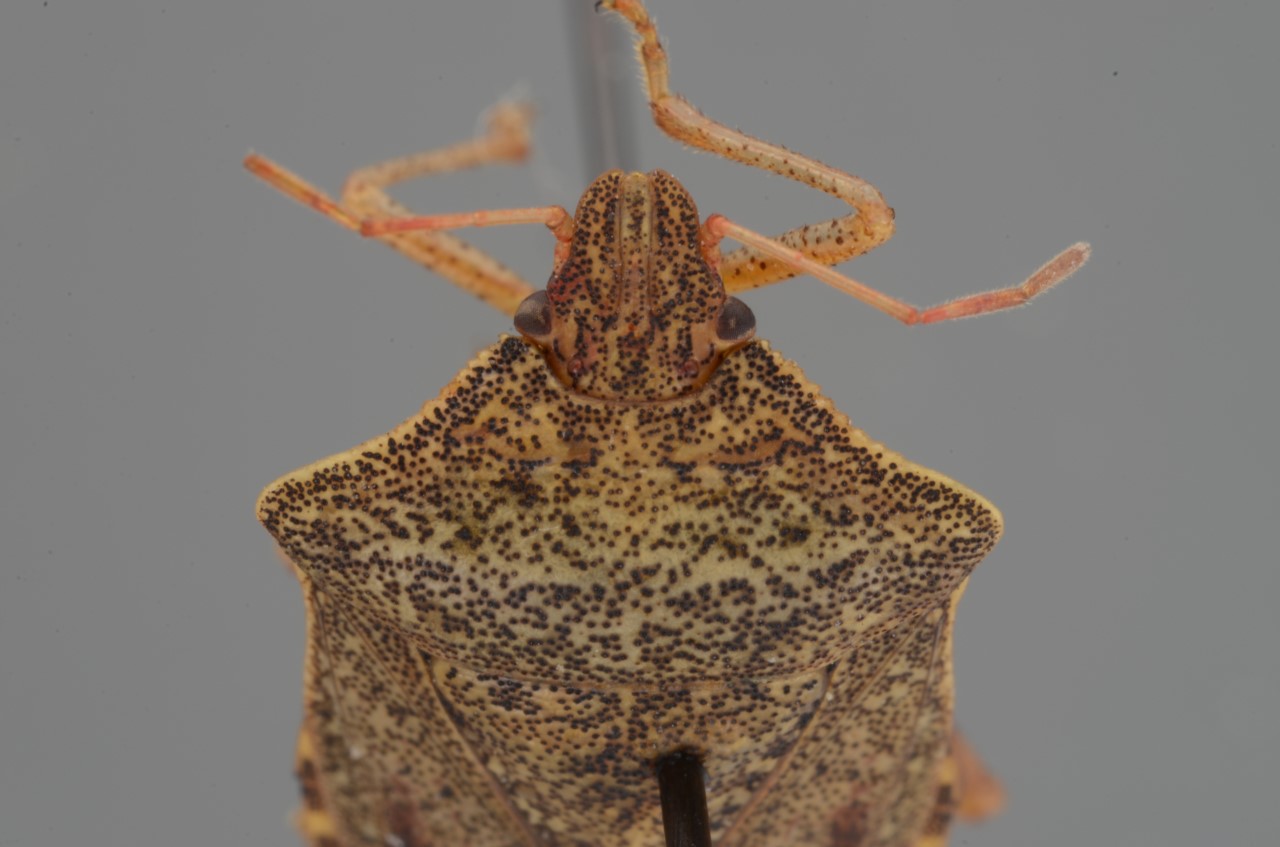
Close up of denticles on pronotum. Photo by Lyle Buss (UF/IFAS)
For more information, see UF/IFAS Featured Creatures: http://entnemdept.ufl.edu/creatures/veg/bean/brown_stink_bug.htm
Selected References

